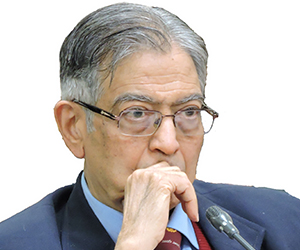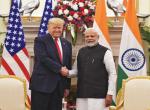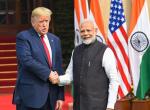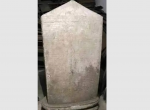The US intent to draw down its forces from Afghanistan beginning July 2011 has been articulated on several occasions since President Barack Obama’s address at West Point on 1 December 2009. In this address he had justified the 30,000 US troop surge in Afghanistan, scheduled for the first half of 2010, on the grounds that it would allow the US to “begin the transfer” of its forces “out of Afghanistan in July of 2011”. He also dwelt upon the importance of capacity building in Afghanistan in order to enable a “responsible transition of US forces” out of the country.
Both these ideas were endorsed at the London Conference on Afghanistan, held on 28 January 2010, which in addition called for Afghan-led efforts for peace, reconciliation, and reintegration. In pursuance of this, efforts have been underway, from time to time, to engage the Taliban.
In an annual review of the situation in Afghanistan and Pakistan the White House made known on 16 December 2010 that while the US troop reductions would commence in July 2011 and transition to an Afghan security lead would start during the year, a broad Afghan and international consensus had been arrived at the recent NATO summit at Lisbon, “agreeing on a path to complete transition by the end of 2014.” The review frankly admitted that though the momentum of the Taliban in Afghanistan had been “arrested” in much of the country and even “reversed” in some areas, these gains were “fragile” and “reversible”.
In the context of the foregoing, it is no surprise that President Obama in his 22 June 2011 speech asserted that beginning July the USA would withdraw 10,000 troops by the end of the year; by the summer of 2012 a total of 33,000 troops would be withdrawn; and by 2014 (note not “end 2014” as had been asserted earlier) the “process of transition will be complete”. He also acknowledged that peace could only come through a “political settlement” and that the US would “join initiatives that reconcile the Afghan people, including the Taliban”.
Quite clearly, the US and its NATO allies plan to cut and run and have no stomach for retaining a heavy military footprint in Afghanistan. This approach has been dictated by several factors, such as the political imperative of the 2012 Presidential elections, which demands the pull back of the bulk of the US forces abroad, and the recognition that a prolonged stay in Afghanistan will be too costly, both in military and economic terms, which the US can ill afford at a time when it is grappling with a grave economic crisis and many other pressing regional and international issues. As cited by Stratfor (22 June 2011), supplying one gallon of petrol in Afghanistan costs the US $400 and the annual cost of sustaining one US soldier in that country amounts to as much as $1 million. Most important of all, there is clear realization in the USA that it cannot decisively defeat the Taliban over the next year or two despite the military surge which in June 2011 had brought its troop levels to 100,000 and those of the Afghan National Army and of the International Security Assistance Force to 170,000 and 47,000 respectively.
It is no wonder, therefore, that in its report of 23 March 2011 titled “Afghanistan: Negotiating Peace”, an international task force, set up by the Century Foundation under the leadership of Ambassadors Lakhdar Brahimi and Thomas Pickering, readily acknowledged that “Neither side can expect to vanquish the other militarily in the foreseeable future” and that there is a “sense of stalemate” in Afghanistan.
Indeed, the prevailing situation on the ground appears to be far worse. The Hamid Karzai government has not been able to strike roots, is corrupt and unpopular, and Taliban forces, though unable to hold the ground, can strike at will almost anywhere. According to the International Crisis Group’s report of 27 June 2011 titled “The Insurgency in Afghanistan’s Heartland”, not only is fundamentalism rising in Afghanistan but the insurgency has expanded far beyond its traditional stronghold in the south-east to several provinces in the vicinity of Kabul. Violent insurgent activity has risen sharply in these provinces and the Taliban have shadow governors in thirty-five of the sixty-two districts in seven provinces around Kabul. The report also argues that while on the one hand the Karzai government is unlikely to “be able to contain the threat and stabilize the country” by 2014, on the other hand it is likely that the Taliban “will push forcefully to gain more ground before the military drawdown” is completed. Through 2011 to date, inclusive of the terrorist attack on the NATO headquarters and the US Embassy on 13 September, there have been as many as six such attacks on the capital, testifying to the precarious security situation in Afghanistan.
In view of the foregoing, it is difficult to go along with those who argue that the USA’s strategic interests in the region, including the desire to ensure that Pakistani nuclear weapons do not fall into the hands of terrorists, and the need to prevent al Qaeda’s resurgence, will ensure that it would continue to maintain a military presence in Afghanistan beyond 2014 albeit at a lower level. Reports persist, however, that under the guise of a strategic partnership agreement, the US is trying to play for long-term military bases in Afghanistan. Such moves are non-starters for, as pointed out by Jonathan Steele in an article of 20 June in The Guardian (20 June 2011), captioned “The Taliban’s Wish List”, the “main motivation” of the Taliban, with whom the US is committed to promote reconciliation in Afghanistan, is to “end foreign occupation” of the country. Clearly, the sine qua non for bringing the Taliban on board for reconciliation is an end to the US military presence in Afghanistan.
While the drawdown of US and NATO forces from Afghanistan is now underway accompanied by efforts at dialoguing with the Taliban, the outcome is uncertain. There are many imponderables. Would the Taliban, for instance, be prepared to accept a power sharing arrangement with President Karzai under the Afghan Constitution and to cut its links with al Qaeda?; and if they do so, how long would the power sharing arrangement last? Would they not find it more to their advantage to wait it out, as time appears to be on their side since the US and its allies have virtually thrown in the towel? Would significant or marginal elements of the Taliban agree to reconciliation with the existing dispensation? In the event of a rapprochement, however short-lived, between the Karzai government and the bulk of the Taliban, would the Hazaras, Uzbeks, Tajiks, etc., who make up nearly 60 per cent of the population, acquiesce in it and allow the exercise of power to fall squarely into Pashtun hands? While there are no clear-cut answers to these questions, the fact is that the Karzai government is weak, corrupt and unpopular and is unlikely to be able to successfully resist the Taliban without foreign support. Thus, the dice are loaded in favour of the Taliban and it is probable that within a couple of years they will either be in power or, at the very least, will be exercising considerable influence in the prevailing dispensation in Kabul. However, a Taliban takeover is unlikely to be smooth and, indeed, may not necessarily happen in a united Afghanistan, as they will not only have to contend with Karzai but also with the non-Pashtun forces, for whom Pashtun domination would be hard to stomach. In these circumstances, US withdrawal will most likely see much bloodshed and civil war conditions cannot be ruled out. In fact, Afghanistan could even break up, with the south and east under the Taliban and the rest under the former members of the Northern Alliance. Should this happen, break-up of Pakistan comes within the realm of possibility, as the Pathans in Pakistan, who have always regarded themselves as Afghans, may feel impelled to join the Pashtun-dominated southern and eastern Afghanistan in a greater Pashtunistan.
Clearly, while many scenarios are possible in Afghanistan following US withdrawal, it is probable that there would be much uncertainty, bloodshed and civil war. In these circumstances external forces are bound to intervene on behalf of their proxies, with unforeseeable consequences. A Taliban dispensation in Afghanistan will have to face opposition not only from sizeable elements within the country like the non-Pashtuns, but also external powers like Russia, Iran and the Central Asian Republics. The Taliban would, of course, be supported by Pakistan. China will most likely play a much more activist role than in the past and may opportunistically seek to use the Taliban to establish its hegemony in Afghanistan. Chinese dominance of Afghanistan will place at its disposal the vast mineral resources of that country, bring it to the gates of West Asia, and immeasurably advance its ambitions of becoming a superpower.
Implications for India
Many have expressed grave apprehensions about the implications for India arising from US withdrawal from Afghanistan and the resulting increased influence of the Taliban there. They have argued that this would give a fillip to the forces of Islamic fundamentalism and terrorism and make Afghanistan a Pakistani pocket borough; that this would result in increased terrorist attacks on India, exacerbation of the communal divide, and diminution of India’s influence in Afghanistan; and that instability will increase in the event of a civil-warlike situation there, and a replay of the great game will ensue, with China as a major player, which would have adverse consequences for the entire region.
While there is some weight in these apprehensions, one may venture to suggest that they are somewhat exaggerated. The export of terrorism to India is, for instance, more or less exclusively Pakistan-inspired and the Afghan role therein is negligible. Pakistan has used terrorism as an instrument of foreign policy against India since 1947; and this will continue in the foreseeable future, whether or not Pakistan exercises influence in Afghanistan, though of course having a pliant regime there will give it increased resources to feed its terror machine. Exacerbation of the communal divide in India is again something that Pakistan has attempted for long with not much success, and the Taliban factor counts for little. The disease of communalism in India depends much more on internal factors than on external forces. As long as the Muslim community in India is mainstreamed and is happy and content, there is little to fear on this account from the pernicious influence of external forces. The relevance of Indian influence in Afghanistan, leaving aside age-old cultural and people-to-people linkages, arises from the fact that Afghanistan is a gateway to Central Asia and can be used as a pressure point against Pakistan. So, any diminution of Indian influence in Afghanistan would undoubtedly be detrimental India’s its national interests. Such diminution is on the cards in the event of a Taliban takeover, at least in the short term.
Over the medium and long term this may not hold true, as any regime in Kabul – even a Taliban one – is bound to be influenced more by national considerations than by blind allegiance to Pakistan. Forces of geopolitics will inevitably influence any regime in Kabul to consider favourably a friendly relationship with India. This is all the more so as Afghanistan-Pakistan relations have been strained for much of their history. Afghanistan has always had grave reservations about the Durand Line, whereby much of the Khyber Pakhtunkhwa and FATA (Federally Administered Tribal Area) were incorporated into British India though they had been a part of Afghanistan and were occupied by Pashtuns. Feelings in Afghanistan ran so high on this issue that in 1948 it voted against Pakistan’s admission to the UN. In 1993 it appealed for renegotiation of the Durand Line in line with its provisions calling for review after a hundred years. Pakistan rejected this call, as indicated in Farzana Shaikh’s book, Making Sense of Pakistan. Farzana Shaikh further points out, quoting from Ahmed Rashid’s book Taliban, that the Taliban regime, which had been built up by Pakistan in the 1990s inter alia in the hope that it would recognize the Durand Line, refused to do so and did not give up Afghanistan’s claims to a part of the NWFP. (Shaikh, Farzana. 2009. Making Sense of Pakistan, C Hurst)
In these circumstances, apprehensions about a Taliban regime in Kabul being a pliant instrument of Pakistan may turn out to be unfounded, as geopolitics and the Durand Line issue will inevitably create tensions between the two. India can also count on Pakistani insensitivity to act as an irritant, which will over time sour the relationship. In this context, one needs to keep in mind Anatol Lieven’s assertion, in his book Pakistan a Hard Country (2011), which is based on the memoirs of Mullah Zaeef, former Taliban Ambassador to Pakistan, that “the Taliban leadership never fully trusted Pakistani governments and the Pakistani military, and since 2001 there has been in some Taliban circles active hatred of the Pakistani military because of the way in which they sided with the US after 9/11.”
Instability anywhere is generally unwelcome. Instability in Afghanistan therefore may have some adverse consequences for India. However, the spillover effect would not be considerable and certainly would be much more in Pakistan. Indeed, to the extent Afghanistan keeps Pakistan occupied on its western front and off balance, this would be to India’s benefit. On the downside, it will afford China an opportunity to fish in troubled waters; and if it does so skilfully, it could end up exercising a preponderant influence in Afghanistan. But going by historical experience, Afghanistan has never taken kindly to external dominance and has invariably exacted a stiff price from all those who have sought to subjugate it. Afghanistan is no Tibet or Xinjiang, where China has dealt in a ham-handed way; a similar approach in Afghanistan will prove costly to China and severely dent its image.
Finally, US withdrawal is not something India should be overly concerned about. Indeed, it may work to India’s advantage. In this context India needs to consider that it is the US presence in Afghanistan that has allowed Pakistan to milk it for billions of dollars of military and economic assistance, to India’s disadvantage, without doing anything to reduce Pakistan’s export of terrorism to India. Withdrawal from Afghanistan will free the US of such Pakistani blackmail and deprive the Pakistani military and economy of a major source of sustenance. To the extent that Pakistan’s capabilities for nurturing its military machine, which has been exclusively developed for use against India, are adversely affected, it would naturally be of benefit to India.
India’s Options
India’s influence on the international community in regard to Afghanistan over the last couple of decades has been marginal, and only a fraction of that of Pakistan. For instance, scant regard was paid to the Indian view that the Taliban should not be included in the reconciliation process in Afghanistan. India was also not consulted by the US in crafting its AfPak policy. Pakistan was a major player in this exercise. It has also exercised considerable influence in international fora in the evolution of policies pertaining to Afghanistan. To some extent this is natural, due to Pakistan’s geographic contiguity to Afghanistan, which India enjoys only theoretically but not in practical terms. This is also a result of the fact that while India has followed a proactive bilateral diplomacy vis-à-vis the government of Afghanistan, it has not been so active in reaching out to all shades of opinion in that country and keeping in close touch with all the key external players. The perception that India has become a US camp follower following the India-US nuclear deal, and its votes against Iran at the IAEA, has also not helped.
Some have advocated that India should consider defending its interests in Afghanistan with boots on the ground. This would be a grave mistake. India’s interests in that country are not so great as to warrant such an exercise the success of which is, in any case, highly uncertain, given: (a) India’s lack of a real geographic contiguity with Afghanistan; (b) the opposition that this would invite from Pakistan and perhaps China; and (c) the fact that the force levels India would be able to project would be limited on account of the internal security demands on its forces, the Sino-Pak threat, etc. India also needs to bear in mind that foreign intervention in Afghanistan has historically met with a rather unfortunate end.
India’s options in Afghanistan are clearly limited; and India needs to recognize that it has been a marginal player there. This is not to say that India should do nothing. While carefully watching the emerging developments over the next couple of years, it should:
a) Strengthen President Karzai’s hand to the extent possible, with financial and technical support, as in the past. India should also not fight shy of helping beef up the Afghan security forces through supply of equipment and training on Indian soil. India’s economic cooperation programmes have been an unadulterated success story and have won it enormous goodwill. This will stand India in good stead over the long term irrespective of the dispensation in power. As a result of its efforts India is the most popular country in Afghanistan.
The Prime Minister’s visit to Afghanistan May 2011 went a long way in furthering Indo-Afghan ties. The joint declaration issued during the visit significantly upgrades the relationship. It inter alia agreed to the establishment of a Strategic Partnership between the two countries, which also envisaged cooperation in security, law enforcement and justice; signalled the enhancement in Indian economic assistance by $500 million, taking the total assistance to $2 billion; and emphasized “the fundamental and lasting importance of the Treaty of Friendship between the Government of India and the Royal Government of Afghanistan of 04 January 1950.” This treaty, signed between Prime Minister Jawaharlal Nehru and the Afghan Ambassador in New Delhi, committed the two countries to “everlasting peace and friendship” and envisaged their mutual appointment of Consul Generals, Consuls, Vice Consuls and Consular Agents. Reiteration of this treaty places the growing India-Afghanistan linkages on a sound historical perspective which will enjoy relevance for all time to come.
b) Develop and deepen contacts with all sections in Afghanistan, including elements of the Northern Alliance, many of whom feel neglected. India’s standing among the Pushtuns also could be better: Pakistan has been plugging the line, with some success, that India is anti-Pushtun. India should rectify this and reach out to influential Pushtun elements.
c) Intensify coordination with the regional players like Russia and Iran on Afghanistan, which has diminished over the years. They, too, are uneasy over a Taliban dispensation in Kabul.
d) Develop contacts with the Taliban. Once in power, Afghanistan’s national interests will inevitably, over time, lead them to view India more favourably, unless India treats them as untouchables. In this context it may be recalled that India had, under the Rajiv Gandhi government, sought to establish contacts even with the Peshawar Seven, including Gulbuddin Hekmatyar.
In these circumstances, the following assertion by India’s Prime Minister in his address to the Joint Session of the Afghan Parliament on 13 May 2011, reconciling India to the process of reconciliation, was sagacious. In one stroke, while pleasing Karzai, it signalled that India did not regard the Taliban as untouchables:
Afghanistan has embarked upon a process of national reconciliation. We wish you well in this enterprise. It is up to you, as the people’s representatives, to make decisions about your country’s future without outside interference or coercion. This is your sovereign right. India will respect the choices you make and the decisions you take.
e) Pursue a much more activist diplomacy in demolishing the myth being created by Pakistan that India is using its presence in Afghanistan to promote terror in Pakistan or that India is undermining Pakistan through collusion with Afghanistan. The fact is that India has had a history of close relations with Afghanistan; that both have had quarrels with Pakistan, but these have been pursued separately and not collusively.
f) Explore and support the idea of a neutral Afghanistan, as has been mooted very persuasively by some, like Ambassador Gharekhan (The Hindu, 27 July 2011). This would, inter alia, entail guarantees by the international community of Afghanistan’s sovereignty, unity, and territorial integrity as well as guarantees of non-interference in its internal affairs by any foreign country. India had in the 1980s constantly been impressing upon the international community the need for noninterference and non-intervention in Afghanistan. Hence, supporting such an approach would be in keeping with India’s traditional thinking on the matter. In purely practical terms, however, it would be prudent to recognize that the proposed policy, while perhaps offering the best solution and a way out of the strife that is likely to engulf Afghanistan once again in the next couple of years, will not find too many takers. To start with, Afghanistan itself may be reluctant to turn itself into a neutral state. Even if it does, would the international community, in particular the great powers and Afghanistan’s neighbours, be ready to commit themselves to a self-denying ordinance requiring them not to interfere in Afghanistan? Above all, would the international community be prepared, and be actually able to sanction, any country that interferes in Afghanistan? It may be recalled that the 1988 Geneva Accords, on the basis of which the Soviet Union withdrew from Afghanistan, inter alia contained guarantees that Pakistan would not interfere in the internal affairs of Afghanistan; yet it flagrantly and with impunity did so.
Notwithstanding these problems, for want of a better solution, there is advantage in India taking a proactive stance on pushing for the ideas mooted by Ambassador Gharekhan, particularly if these can be embellished further with an appropriate mechanism to lend teeth to the guarantees for noninterference in Afghanistan. An activist and constructive approach by India will help enhance its role and secure its interests in Afghanistan and is certainly better than the reactive manner in which it tends to conduct its foreign policy.
Published in Indian Foreign Affairs Journal Vol. 6, No. 3, July–Sept. 2011, 242-250 (© Association of Indian Diplomats) and the same not to be distributed / reproduced in any form without the express permission of the copyright holders.










Post new comment